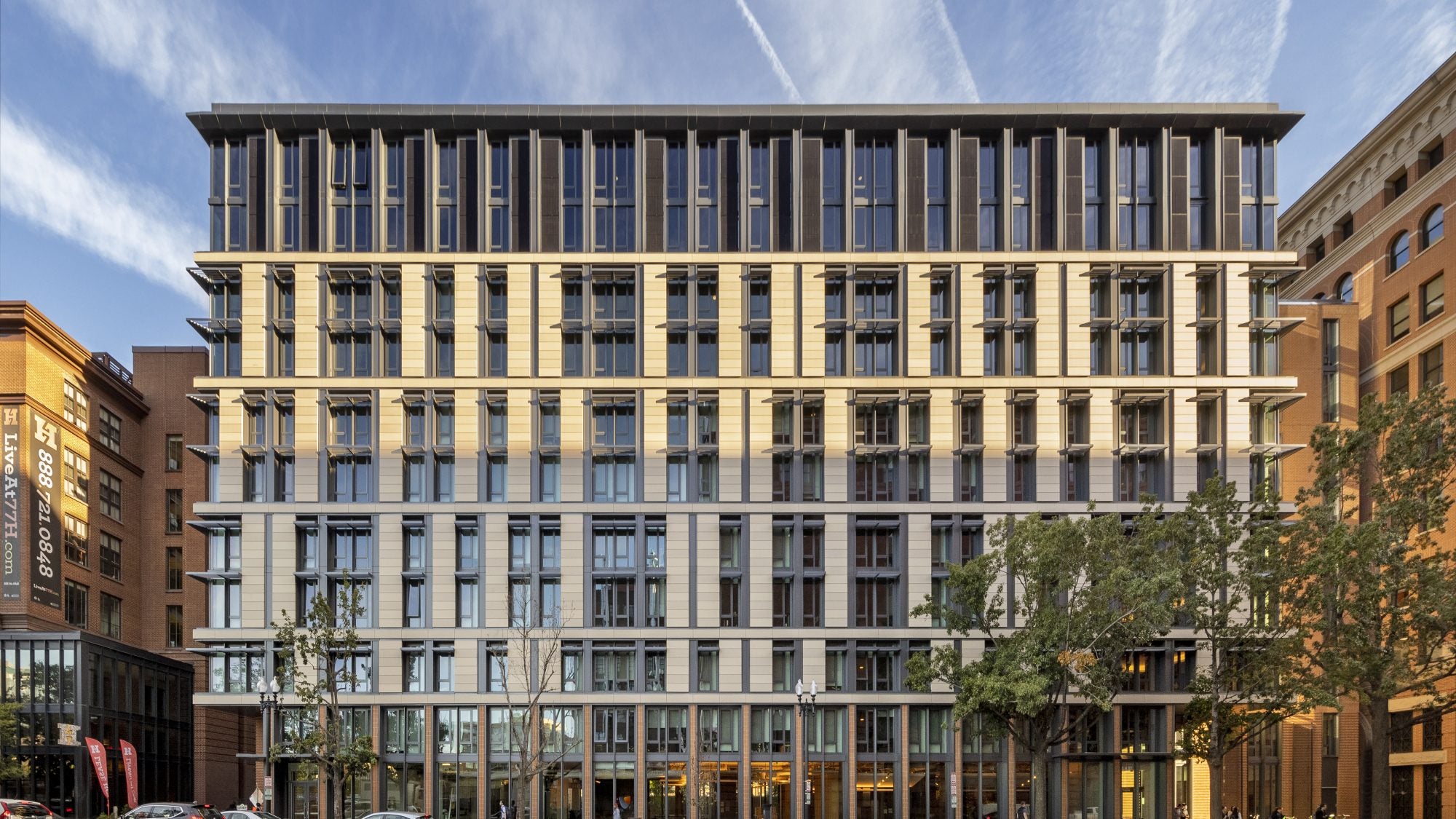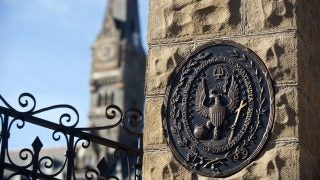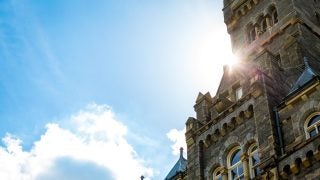The Leadership in Energy & Environmental Design (LEED) certification is a widely recognized symbol of excellence in sustainable building and construction. Georgetown currently has eight other LEED-certified buildings in addition to its first LEED Platinum certification.
“Achieving LEED Platinum certification is a major accomplishment for Georgetown,” said Meghan Chapple, vice president for sustainability at Georgetown. “55 H is a special building and is one of the hallmarks of the Capitol Campus. The certification is a testament to what a special space it is.”

Located a few blocks from the U.S. Capitol and steps away from Georgetown Law and the School of Continuing Studies, 55 H St. NW is an apartment-style residential building for undergraduates in the Capitol Applied Learning Labs program and graduate students across multiple schools at Georgetown. The building features modern living spaces, a fitness center, a contemplation space and other common areas for students to live, study and work in the heart of DC.
Lori Baldwin, vice president of planning, facilities management, and corporate partnerships, said that the central location of 55 H St. NW in downtown DC prominently showcases the university’s strong commitment to sustainability.
“55 H is such a visible building in a vibrant part of the city,” Baldwin said. “Having this beautiful space that includes so many different aspects of sustainability is a great representation of Georgetown’s commitment to green buildings.”
The building’s innovative spaces, design and features put sustainability at the forefront. Chief among the building’s eco-friendly features is its use of a new concrete technology that leads to a 40% reduction in greenhouse gas emissions compared to traditional concrete.
Solar panels also line the building’s green roof and the front-facing side of the building, a visible commitment to sustainability for the passersby to see, Baldwin said. The building is powered by clean electricity that does not rely on fossil fuels.
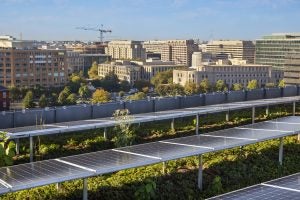
55 H St. NW also features sun shades and high-performance glass windows that change tint depending on the intensity of sunlight, keeping temperatures inside the building down during the warmer months of the year and reducing overall energy consumption. Upon entering the building, students also encounter a green wall adorned with living plants and have access to a large outdoor courtyard.
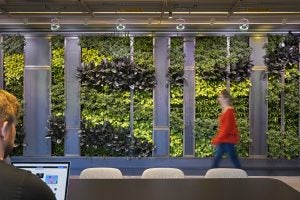
55 H St. NW joins a growing list of buildings at Georgetown that are LEED-certified. Since 2013, Georgetown has committed all of its new building projects to achieve at least a LEED Silver certification.
But Chapple and her team hope to raise the standards of sustainability for future building projects. The university is renovating the Henle Village student apartment complex, which is currently on track to achieve LEED Platinum status ahead of its scheduled completion in July 2025.
“We hope this achievement with 55 H will raise the bar for sustainability at Georgetown,” Chapple said. “We plan to continue to push the boundaries of possibilities of caring for our common home through robust sustainability efforts.”
